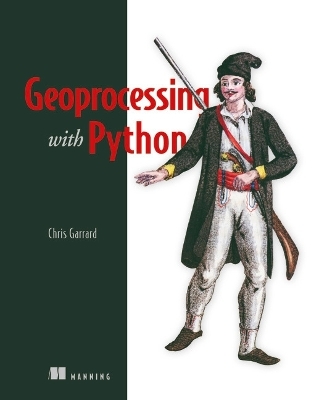
Geoprocessing with Python
Seiten
2016
Manning Publications (Verlag)
978-1-61729-214-9 (ISBN)
Manning Publications (Verlag)
978-1-61729-214-9 (ISBN)
DESCRIPTION
Geospatial data is hard to ignore. Nearly every car, phone, or camera has a GPS sensor, and aerial photos, satellite imagery, and data representing political boundaries, roads, rivers, and streams are available for free download from many websites. Geoprocessing is the science of reading, analyzing, and presenting geospatial data programmatically. The Python language, along with dozens of open source libraries and tools, makes it possible to take on professional geoprocessing tasks without investing in expensive proprietary packages like ArcGIS and MapInfo.
Geoprocessing with Python teaches how to use the Python programming language along with free and open source tools to read, write, and process geospatial data. It shows how to access available data sets to make maps or perform analyses using free and open source tools like the GDAL, Shapely, and Fiona Python modules. Readers will master core practices like handling multiple vector file formats, editing and manipulating geometries, applying spatial and attribute filters, working with projections, and performing basic analyses on vector data. They’ll also learn how to create geospatial data, rather than just consuming it. The book also covers how to manipulate and analyze raster data, such as aerial photographs, satellite images, and digital elevation models.
KEY SELLING POINTS
Geoprocessing from the ground up
Shows how to create custom geoprocessing tools
Takes advantage of free and open source tools
AUDIENCE
Readers need a basic knowledge of Python or a similar programming language. No previous experience with geoprocessing or geospatial data required. Perfect for readers who have used Python with Esri ArcGIS and want to apply their Python skills elsewhere.
ABOUT THE TECHNOLOGY
Geoprocessing is the science of reading, analyzing, and presenting geospatial data programmatically. The Python language, along with dozens of open source libraries and tools, makes it possible to take on professional geoprocessing tasks without investing in expensive proprietary packages like ArcGIS and MapInfo.
Chris Garrard has worked as a developer for the Remote Sensing / GIS Laboratory at Utah State University for over a decade. She teaches a graduate level course on Python programming for GIS and enjoys helping students see the power that comes with writing their own code.
| Verlagsort | New York |
|---|---|
| Sprache | englisch |
| Maße | 185 x 235 mm |
| Gewicht | 620 g |
| Themenwelt | Informatik ► Datenbanken ► Data Warehouse / Data Mining |
| Mathematik / Informatik ► Informatik ► Netzwerke | |
| Mathematik / Informatik ► Informatik ► Programmiersprachen / -werkzeuge | |
| Informatik ► Software Entwicklung ► User Interfaces (HCI) | |
| Informatik ► Web / Internet ► Web Design / Usability | |
| ISBN-10 | 1-61729-214-1 / 1617292141 |
| ISBN-13 | 978-1-61729-214-9 / 9781617292149 |
| Zustand | Neuware |
| Haben Sie eine Frage zum Produkt? |
Mehr entdecken
aus dem Bereich
aus dem Bereich
Datenanalyse für Künstliche Intelligenz
Buch | Softcover (2024)
De Gruyter Oldenbourg (Verlag)
CHF 104,90
Daten importieren, bereinigen, umformen und visualisieren
Buch | Softcover (2024)
O'Reilly (Verlag)
CHF 76,85


